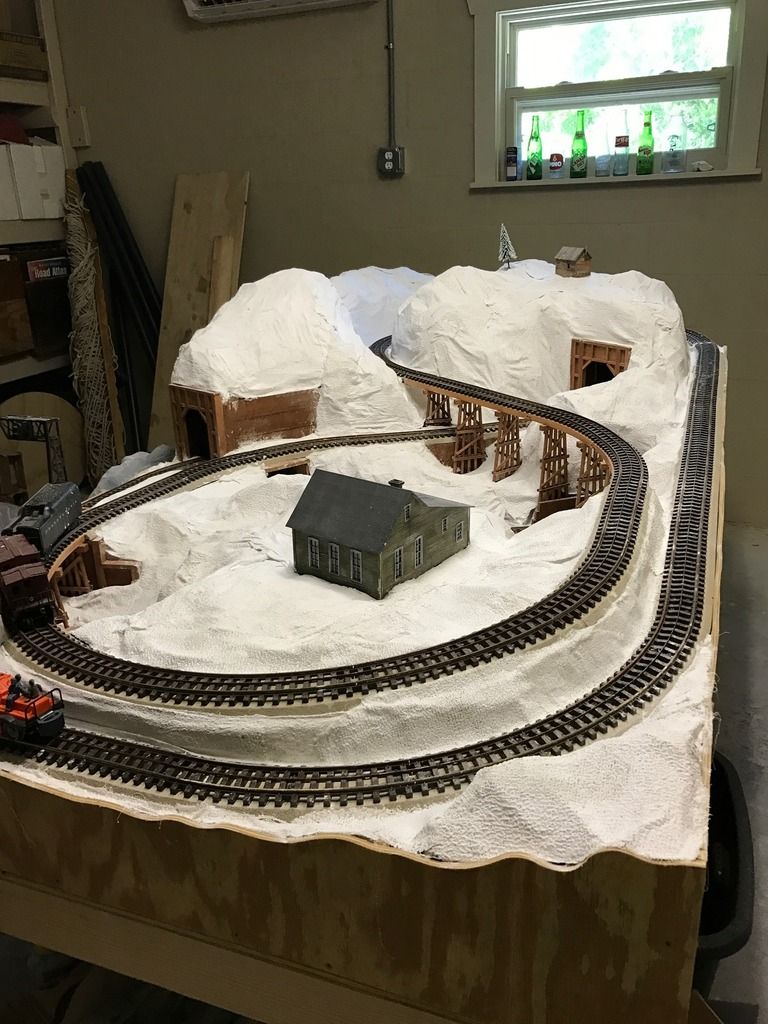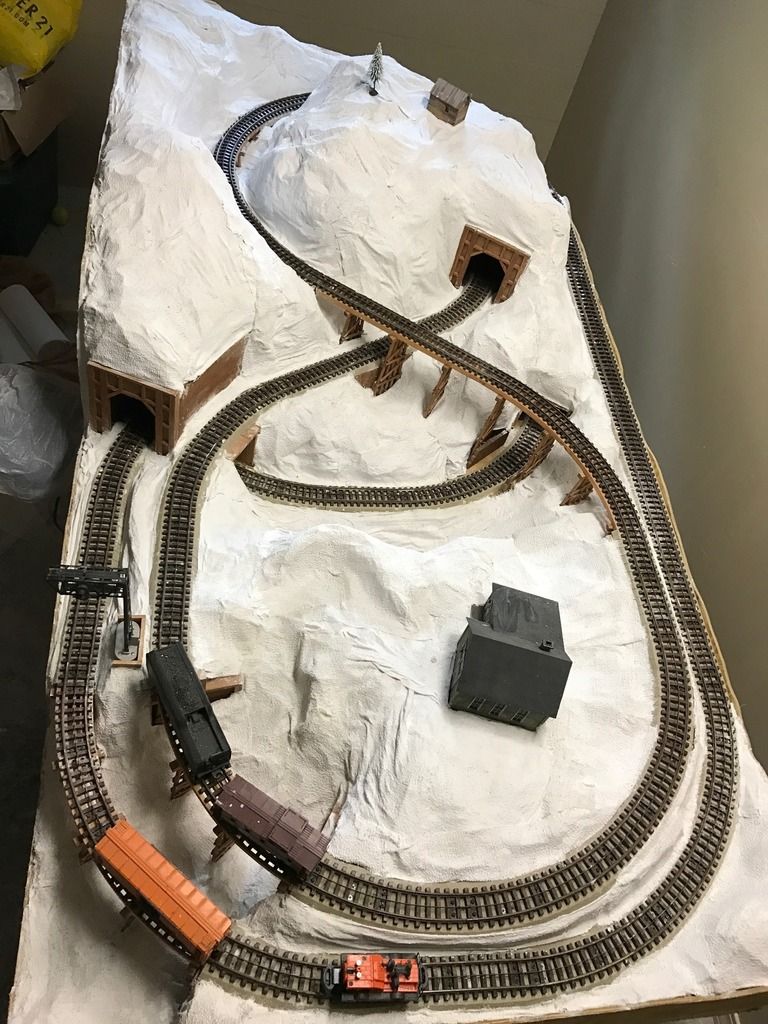I recently wrote too long of a post chronicling the problems I'm having with my Super O ascending/descending mountain layout. In a nutshell, my 681/682 turbines are too heavy for the specific layout as they roll off the track coming out of a decline, and while my 2036 does not derail at said decline pulling the exact same consist, it does have an issue at another spot where the small front wheels jump off the track where I have two curved sections connected in zigzag form (opposing directions; roughly forming a letter "s").
In researching, I see that my old 2036 was designed specifically for the O-27 track, but "will work" on O-gauge and Super O. I find info where some other trains from the 50s/early 60s were sold specifically with Super O sets, but yet the bottom chassis of these locomotives have the exact same "LIONEL O27" badge on the bottom of the chassis as the 2036 does.
I am not an expert on these trains, obviously. Is/are there any specific locomotive(s) from the postwar period that will run optimally on the Super O track?
Thank you!








